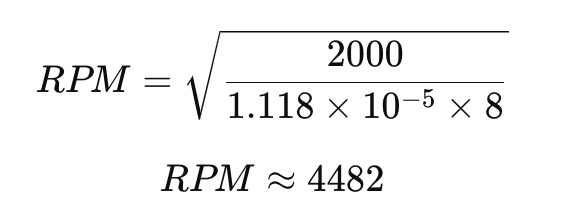Centrifuge Testing: Key Parameters & Optimization Tips
Centrifuge testing plays a critical role in various industries, from biomedical research to material testing and aerospace applications. Understanding the essential parameters and calculations required for accurate and effective testing ensures reliable results. In this article, we will explore key factors such as rotational speed, relative centrifugal force (RCF), rotor selection, and safety considerations, along with how to optimize the testing process.
Key Parameters in Centrifuge Testing
When conducting centrifuge testing, several essential parameters must be considered to ensure accurate and effective separation or analysis. These parameters depend on the specific application, but the most common ones include:
1. Rotational Speed (RPM)
Measured in revolutions per minute (RPM), this determines how fast the centrifuge rotor spins.
Higher speeds generate greater centrifugal force, which is essential for separating materials based on density.
2. Relative Centrifugal Force (RCF or g-force)
RCF represents the force applied to the sample relative to Earth's gravity (expressed in “g”)
It is calculated using the formula:
where:
r is the rotor radius (cm)
RPM is the rotational speed
RCF is a more meaningful parameter than RPM because it accounts for rotor size and sample distance.
3. Rotor Type and Selection
Different rotor designs impact sample separation:
Fixed-angle rotors: Hold tubes at an angle, ideal for pelleting applications.
Swinging-bucket rotors: Allow tubes to swing out horizontally, useful for gradient separations.
Vertical rotors: Best for rapid sedimentation.
Choosing the right rotor depends on the sample type, separation requirement, and centrifuge capacity.
4. Run Time
The longer the test, the more refined the separation.
Longer run times may be required for denser materials or finer separations.
5. Sample Volume and Tube Size
The volume of the sample and the size of the centrifuge tubes must be compatible with the rotor's capacity.
Overfilling or underfilling tubes can lead to inefficient separation or even accidents.
6. Safety Considerations
Proper balancing of centrifuge tubes is essential to prevent damage or accidents.
Use tubes and lids rated for the calculated RCF and RPM.
Avoid exceeding the centrifuge’s maximum capacity.
By carefully controlling these parameters, you can optimize the centrifuge process for your specific application and achieve reliable results.
How to Calculate Centrifuge Parameters
To calculate the essential parameters for centrifuge testing, you need to consider the specific requirements of your application and the physical principles involved. Below are the steps and formulas to calculate key parameters:
1. Calculating RCF (g-force)
RCF is a critical parameter that determines the force applied to the sample. It depends on the rotational speed (RPM) and the radius of the centrifuge rotor.
where:
RCF is the Relative Centrifugal Force (in “g”)
r is the rotor radius (cm), the distance from the center of the rotor to the bottom of the tube.
RPM is the rotational speed in revolutions per minute.
Steps:
Measure the rotor radius (r).
Determine the desired RPM.
Plug the values into the formula to calculate RCF.
Example:
If the rotor radius is 10 cm and the centrifuge operates at 3000 RPM, the RCF can be determined as follows:
2. Calculating RPM from RCF
If you know the required RCF and rotor radius, you can calculate the necessary RPM.
Formula:
Steps:
Determine the required RCF.
Measure the rotor radius (r).
Plug the values into the formula to calculate RPM.
Example:
If the required RCF is 2000 g and the rotor radius is 8 cm, the RPM can be determined as follows:
Thus, the centrifuge needs to run at approximately 4482 RPM to achieve the desired 2000 g force.
3. Rotor Selection
Choose a rotor type (fixed-angle, swinging-bucket, etc.) based on your application. The rotor's maximum speed and capacity must match your requirements.
Steps:
Check the rotor's specifications (maximum RPM, RCF, and tube capacity).
Ensure compatibility with your centrifuge model.
4. Safety Checks
Balance the tubes symmetrically in the rotor.
Use tubes and lids rated for the calculated RCF and RPM.
Avoid overloading the rotor.
Example Calculation Workflow:
Determine RCF Requirement: For example, you might need RCF=2000 g.
Measure Rotor Radius: Suppose r=10 cm.
Calculate RPM
Set Run Time: for example 10-15 minutes
By following these steps and calculations, you can determine the essential parameters for centrifuge testing and ensure optimal results for your application.
Optimizing Centrifuge Testing for Best Results
Ensure Proper Balancing: Always balance tubes symmetrically to prevent uneven forces.
Match Rotor to Application: Different applications require specific rotor types.
Optimize Run Time: Longer runs may be needed for denser materials.
Use Correct Tubes and Accessories: Ensure compatibility with high-speed operation.
By following these best practices and calculations, industries can maximize the efficiency and accuracy of centrifuge testing, leading to improved research outcomes and quality control.
Need help? Don’t hesitate to contact us.






